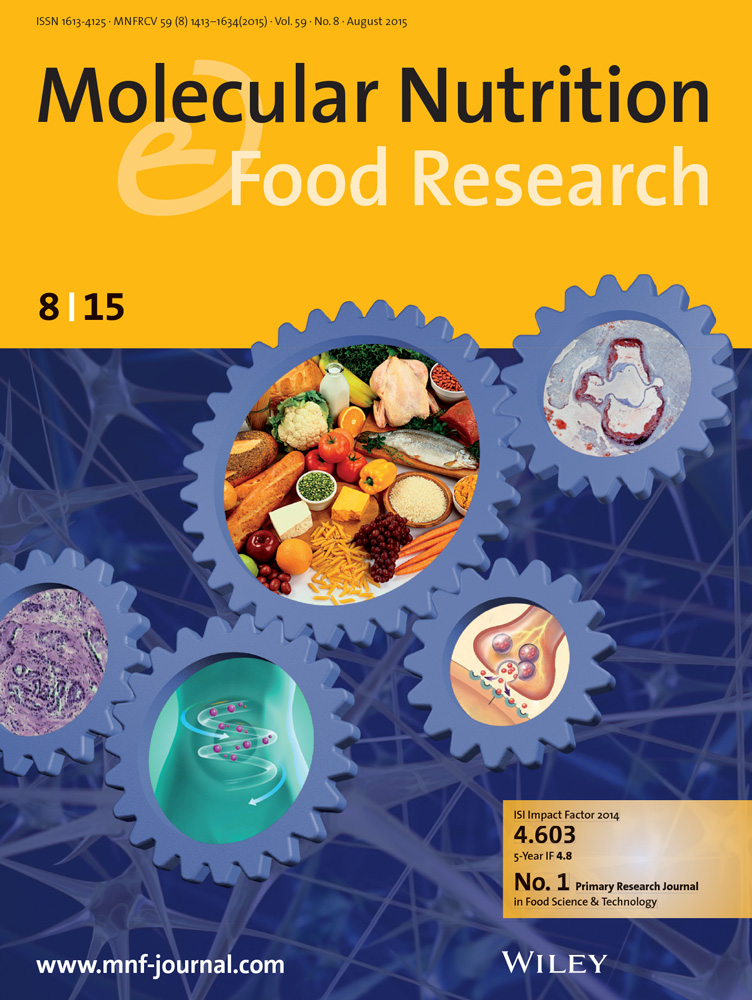Protective Effect of Piperine on Indomethacin-Induced Intestinal Damage
IF 4.5
2区 农林科学
Q1 FOOD SCIENCE & TECHNOLOGY
引用次数: 0
Abstract
Nonsteroidal antiinflammatory drugs (NSAIDs) are widely prescribed for the treatment of inflammation and chronic pain. Chronic use of NSAIDs is associated with adverse events and organ damage, especially to the gastric mucosa and small intestine. This study evaluates the protective effect of piperine on indomethacin-induced intestinal damage. Eighteen male Mus musculus mice, aged 6–8 weeks, were used. Intestinal damage was induced with indomethacin (10 mg/mL) and cotreatment with piperine (20 mg/mL), both administered orally. After 14 days, the animals were euthanized. Biochemical serological analysis was performed. Intestinal inflammation was assessed based on macroscopic, histopathological, and metagenomic analyses. Histopathological analysis showed a reduction in small intestine inflammation (p < 0.05) and the disappearance of necrosis in the intestinal wall of the large intestine. Crypt and villus measurements showed increased values in the piperine-treated group (p < 0.05). An approximately six-fold increase in aspartate aminotransferase (AST) was observed in the Indomethacin group (p < 0.05). Regarding the intestinal microbiota, an increase in genus diversity was observed in the piperine-treated group (p < 0.05). There was a 50% reduction in micronucleus formation with the administration of piperine 20 mg/kg (p < 0.05). It was concluded that cotreatment with piperine has great potential in mitigating the side effects caused by NSAIDs.

胡椒碱对吲哚美辛致肠道损伤的保护作用
非甾体类抗炎药(NSAIDs)被广泛用于治疗炎症和慢性疼痛。慢性使用非甾体抗炎药与不良事件和器官损伤有关,特别是对胃粘膜和小肠。本研究评价胡椒碱对吲哚美辛致肠道损伤的保护作用。选用6-8周龄雄性小家鼠18只。吲哚美辛(10mg /mL)和胡椒碱(20mg /mL)口服均可引起肠道损伤。14天后,这些动物被安乐死。进行生化血清学分析。根据宏观、组织病理学和宏基因组学分析评估肠道炎症。组织病理学分析显示小肠炎症减轻(p <;0.05),大肠肠壁坏死消失。隐窝和绒毛测量显示,胡椒处理组的值增加(p <;0.05)。吲哚美辛组的天冬氨酸转氨酶(AST)大约增加了6倍(p <;0.05)。在肠道菌群方面,胡椒碱处理组的菌群多样性有所增加(p <;0.05)。给药胡椒碱20mg /kg后,微核形成减少50% (p <;0.05)。结论:与胡椒碱联合治疗在减轻非甾体抗炎药副作用方面具有很大的潜力。
本文章由计算机程序翻译,如有差异,请以英文原文为准。
求助全文
约1分钟内获得全文
求助全文
来源期刊

Molecular Nutrition & Food Research
工程技术-食品科技
CiteScore
8.70
自引率
1.90%
发文量
250
审稿时长
1.7 months
期刊介绍:
Molecular Nutrition & Food Research is a primary research journal devoted to health, safety and all aspects of molecular nutrition such as nutritional biochemistry, nutrigenomics and metabolomics aiming to link the information arising from related disciplines:
Bioactivity: Nutritional and medical effects of food constituents including bioavailability and kinetics.
Immunology: Understanding the interactions of food and the immune system.
Microbiology: Food spoilage, food pathogens, chemical and physical approaches of fermented foods and novel microbial processes.
Chemistry: Isolation and analysis of bioactive food ingredients while considering environmental aspects.
 求助内容:
求助内容: 应助结果提醒方式:
应助结果提醒方式:


